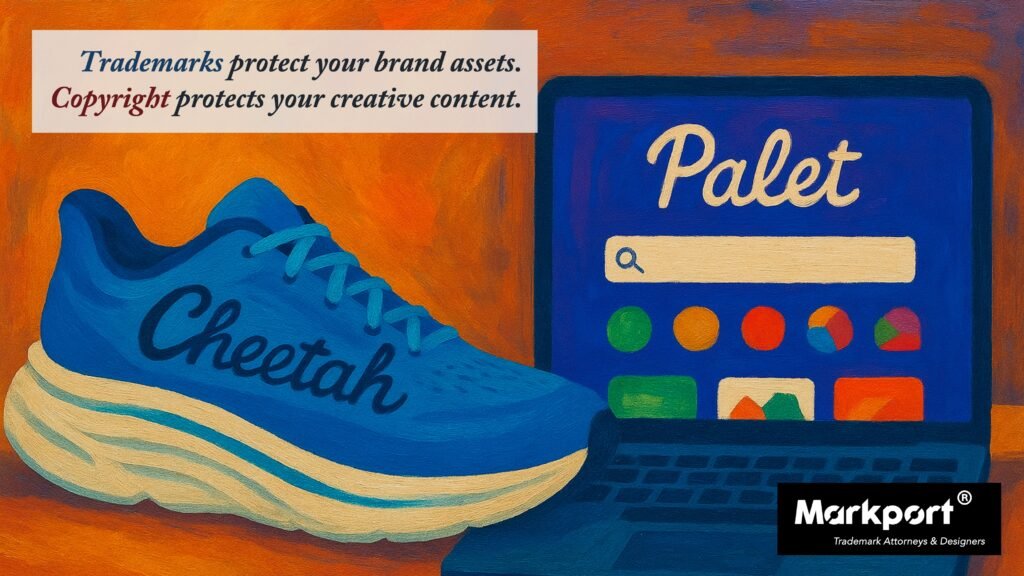Trademarks vs Copyright: What You Need to Know

If you work in the creative industries, understanding intellectual property (IP) is essential. IP protects your creative output and your brand identity. Trademarks and copyright are two of the main types of intellectual property. While both provide legal protection, they apply to different kinds of assets and serve distinct purposes.
Why it matters
Knowing the difference between trademarks and copyright allows you to make smart decisions about how to protect your business. Without the right protection, you risk losing control over your creative work, your brand, or both. Effective IP management helps you build trust, maintain exclusivity, and safeguard your commercial edge.
What do trademarks and copyright protect?
Trademarks protect the signs that set your business apart, such as names, logos, symbols, taglines, brand colours, product shapes, packaging, and distinctive sounds like chimes or sound marks. These elements help consumers identify the source of your goods or services and distinguish you from competitors.
Copyright, on the other hand, protects original creative works. This includes books, articles, music, lyrics, photographs, illustrations, films, TV shows, software code, architectural plans, choreography, templates, instructional materials, and more. It ensures that creators control how their work is used, shared, or monetised.
Comparison: Trademarks vs Copyright
| Feature | Trademarks | Copyright |
|---|---|---|
| What it protects | Names, logos, symbols, taglines, brand colours, product shapes, packaging, chimes or sound marks | Books, articles, music, lyrics, photographs, illustrations, films, TV shows, software code, architectural plans, choreography, design templates, instructional materials |
| Purpose | Help consumers identify the source of a product or service and distinguish it from others. Build brand recognition and trust. Prevent counterfeiting and imitation. | Protect the original expression of ideas. Give creators control over how their work is used, reproduced, or shared. Help them monetise and protect their creations. |
| When protection starts | Rights can arise from use, but are stronger and easier to enforce once registered. | Automatically when the work is created and fixed. |
| Duration | It can last indefinitely if renewed. | Generally, the life of the creator plus 70 years. |
| Examples | HOKA brand name and logo, Guzman y Gomez packaging, Canva’s tagline | Canva’s software, templates, design assets, and instructional videos |
Real-world examples
HOKA has registered its brand name and logo to protect its identity in the footwear market. Guzman y Gomez protects its distinctive packaging and logo to prevent competitors from copying them. Canva uses trademarks to protect its logo and tagline, while it uses copyright to protect its templates, illustrations, software code, and instructional content.
Don’t forget international protection
IP laws vary from country to country. For example, Australia has no copyright registration system, but countries like the US and the Philippines do. In Australia, trademarks can be protected with use or registration, while other countries strictly require registration before protection is granted. In any case, trademarks need to be registered in every country or region (such as the EU) where you intend to use them in business. To stay protected, it’s crucial to understand local laws wherever your brand or creative work is being used.
Still have questions?
